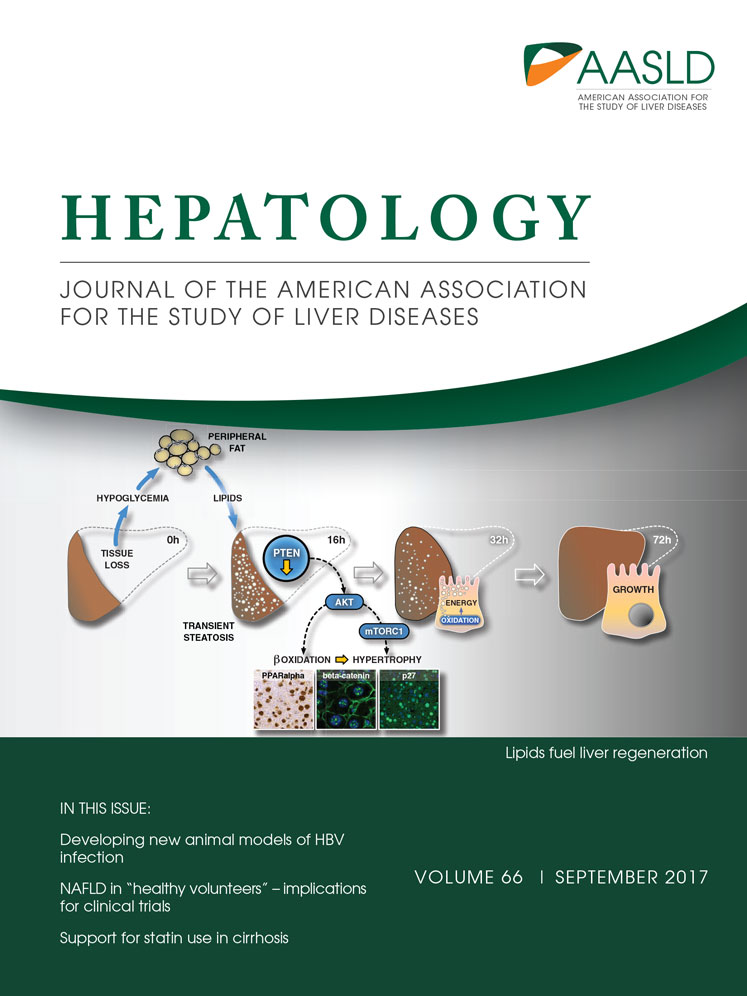Reply
Potential conflict of interest: Nothing to report.
We thank Dr. Pandey for her interest in our recent study.1 We completely agree that matching in case-control studies increases study power and allows one to control for important confounders such as age and ethnicity. However, there are several limitations to that approach.
First, the use of matching must be applicable to the study design. Our study was a cross-sectional study to identify rates of presumed NAFLD in a given population, not a case-control study. The case-control analysis was only performed to show that the presumed NAFLD subjects indeed “fit the mold” for what is known about the disease. In that context, it is important to report what the rates of presumed NAFLD (27.9%) and truly healthy subjects (29.4%) are. Insisting on maintaining identical numbers of subjects in both groups would have defeated that purpose.
Second, matching should be based on some knowledge and should be limited to covariates that can be confounders. Although age and race are important confounders, in our analysis they were actually informative dependent variables. For example, by addressing them as such, our study shows that research participants with NAFLD tend to be older, and thus can allow them to better stratify their subjects. To explore Dr. Pandey's suggestion of age-matching, we reexamined our data. As shown in Table 1, at each stratified age cohort, the presumed NAFLD subjects had significantly greater evidence of metabolic derangements in the young and middle-aged volunteers. Because the number of volunteers who were >50 years of age was low, the differences did not reach statistical significance, although the trend for worse metabolic parameters persisted.
| Parameter | Age Cohort | |||||
|---|---|---|---|---|---|---|
| 18-35 Years | >35-50 Years | >50 Years | ||||
| Healthy Control (n = 752) | Presumed NAFLD (n = 441) | Healthy Control (n = 138) | Presumed NAFLD (n = 305) | Healthy Control (n = 39) | Presumed NAFLD (n = 135) | |
| BMI, kg/m2 | 22. 3 (1.8) | 31.0 (5.9)** | 22.6 (1.7) | 31.3 (5.4)** | 22.6 (1.8) | 31.5 (5.3)** |
| ALT, U/L | 18 (6) | 41 (21)** | 19 (7) | 41 (20)** | 17 (5) | 37 (15)** |
| AST, U/L | 18 (6) | 26 (15)** | 19 (16) | 26 (17)** | 18 (4) | 24 (8)** |
| Total cholesterol, mg/dL | 163 (30) | 173 (37)** | 179 (34) | 189 (40)** | 190 (37) | 197 (39) |
| HDL-C, mg/dL | 63 (17) | 52 (16)** | 67 (19) | 50 (16)* | 60 (13) | 55 (17) |
| LDL-C, mg/dL | 85 (24) | 101 (34 ** | 98 (30) | 115 (34)** | 110 (28) | 114 (32) |
| Triglycerides, mg/dL | 78 (40) | 103 (61)** | 76 (30) | 121 (79)** | 92 (37) | 140 (99)** |
| Hemoglobin A1c, % | 5.2 (0.4) | 5.4 (1.0)* | 5.2 (0.3) | 5.6 (0.9)** | 5.5 (0.6) | 5.8 (0.6) |
| Serum glucose, mg/dL | 89 (13) | 92 (23)* | 91 (13) | 93 (17) | 98 (16) | 100 (24) |
| NAFLD fibrosis score | −3.5 (0.8) | −3.0 (1.0)** | −2.7 (1.2) | −2.4 (1.0)* | −2.1 (1.0) | −1.6 (0.9)* |
- Abbreviations: ALT, alanine aminotransferase; AST, aspartate aminotransferase; BMI, body mass index; HDL-C, high-density lipoprotein cholesterol; LDL-C, low-density lipoprotein cholesterol; NAFLD, nonalcoholic fatty liver disease.
- Data are presented as the mean (standard deviation).
- *P < 0.01, **P < 0.0001 for the comparison with healthy controls in the same age cohort.
Finally, one must recognize that, at some point, pragmatism may supersede stringent matching criteria to allow for efficient subject recruitment and to control the cost of research.
-
Varun Takyar, M.D.
-
Yaron Rotman, M.D., M.Sc.
-
Liver & Energy Metabolism Unit
-
Liver Diseases Branch
-
National Institute of Diabetes and Digestive
-
and Kidney Diseases
-
National Institutes of Health
-
Bethesda, MD




